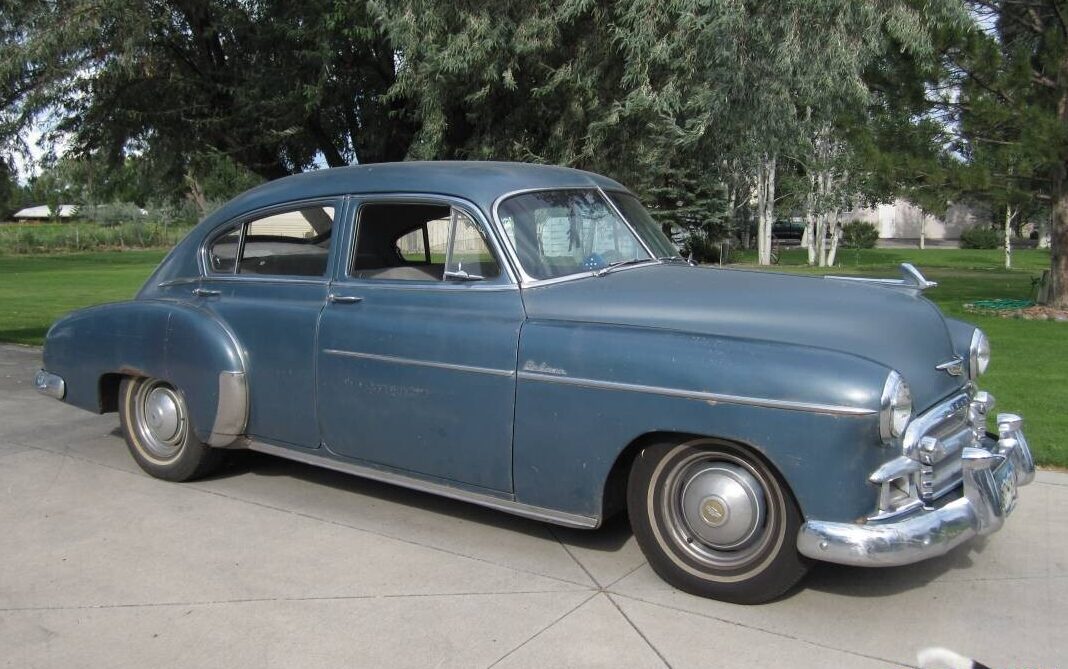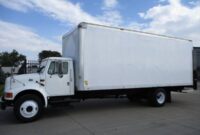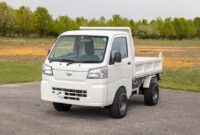1950 To 1960 Pickup Trucks For Sale: A Comprehensive Buyer’s Guide pickup.truckstrend.com
Step into a world where steel was king, engines hummed a simple tune, and design was a blend of robust utility and burgeoning style. The pickup trucks manufactured between 1950 and 1960 represent a pivotal era in automotive history, marking the transition from purely utilitarian workhorses to vehicles that began to embrace comfort, style, and even a touch of suburban flair. For enthusiasts, collectors, and those simply seeking a tangible piece of Americana, the market for 1950s and early 60s pickup trucks is vibrant and diverse. These classic trucks aren’t just vehicles; they are rolling canvases for customization, cherished restoration projects, and a unique way to experience the open road. If you’re considering adding one of these iconic machines to your garage, this comprehensive guide will equip you with the knowledge needed to navigate the exciting world of 1950-1960 pickup trucks for sale.
The Golden Age of Utility and Style: Why 1950-1960 Pickups?
1950 To 1960 Pickup Trucks For Sale: A Comprehensive Buyer’s Guide
The decade spanning the 1950s was a period of immense growth and change in America, and the automotive industry mirrored this evolution. Post-World War II prosperity led to a booming economy, the rise of the suburbs, and a demand for vehicles that could serve both work and leisure. Pickup trucks, once solely the domain of farmers and tradesmen, started to gain broader appeal.
Automakers responded by introducing more refined designs, improved comfort features, and powerful new engines. Gone were the boxy, pre-war designs, replaced by more rounded, flowing lines, integrated fenders, and wider cabs. The introduction of V8 engines became common, offering more power, and automatic transmissions started appearing as options, making these trucks easier and more comfortable to drive. Features like improved heating, better seating, and more appealing interior finishes hinted at the dual-purpose role these trucks were beginning to play.
The appeal of these trucks today lies in their timeless aesthetic, their mechanical simplicity (compared to modern vehicles), and their inherent durability. They are relatively easy to work on for the mechanically inclined, and their robust construction means many have survived decades of use. Whether you envision a meticulously restored showpiece, a reliable weekend cruiser, or a heavily customized "restomod," a 1950s or early 60s pickup offers a fantastic foundation.
Popular Models and Their Distinguishing Features
While many manufacturers produced pickups during this era, a few stand out for their iconic design, popularity, and availability of parts.
-
Chevrolet Task Force (1955-1959) / Advance Design (1947-1955): Chevrolet dominated the truck market in the 1950s. The "Advance Design" series (1947-1955) is instantly recognizable with its rounded lines and five-bar grille. The mid-1955 "Task Force" series marked a significant styling departure, featuring a wider, flatter hood, wrap-around windshields, and the introduction of the small-block V8 engine, making them highly desirable. Models like the 3100 (half-ton) are incredibly popular for their classic good looks and ease of customization.

-
Ford F-Series (F-100 particularly): Ford’s "Bonus Built" F-Series debuted in 1948 and evolved significantly through the 1950s. The second-generation F-Series (1953-1956), particularly the F-100, is a collector’s favorite, known for its clean lines, prominent grille, and "Million Dollar Cab" which offered more interior space and comfort. The 1957-1960 models featured a more squared-off, modern design. Ford introduced its Y-block V8s during this period, offering robust powerplants.

Dodge C-Series / Power Wagon: Dodge trucks from this era often had a more rugged, utilitarian aesthetic. The C-Series (1954-1960) introduced "pilot house" cabs for improved visibility and offered a range of engine options, including powerful V8s later in the decade. The legendary Dodge Power Wagon, a direct descendant of WWII military trucks, continued to be produced through this period, known for its incredible off-road capability, four-wheel drive, and heavy-duty construction. These are niche but highly sought-after for their unique heritage.
-
GMC: Often sharing platforms with Chevrolet, GMC trucks typically offered distinct grilles, badging, and sometimes different engine options, appealing to a slightly more premium market. Many of the same considerations for Chevy trucks apply to their GMC counterparts.

What to Look For: Key Considerations When Buying
Purchasing a classic pickup from the 1950s or early 60s requires careful inspection and a clear understanding of your goals.
-
Rust, Rust, Rust: This is the ultimate deal-breaker. Inspect the frame thoroughly for pitting, cracks, or repairs. Pay close attention to common rust areas: cab corners, rocker panels, floorboards, bed floors, inner and outer fenders, and around the windshield and rear window. Surface rust is manageable, but structural rust can be prohibitively expensive to repair.
-
Drivetrain Condition:
- Engine: Does it run? Does it smoke (blue for oil, white for coolant, black for fuel)? Listen for knocks, ticks, or unusual noises. Check for oil leaks. Decide if you want the original engine (numbers matching) or if a modern engine swap (e.g., Chevy LS, Ford Coyote) is acceptable for more power and reliability.
- Transmission: Check for smooth shifting in manual transmissions. For automatics, ensure it shifts through all gears without hesitation or slipping.
- Differential/Axles: Listen for howling or clunking sounds, which can indicate worn gears or bearings.
-
Suspension, Steering, and Brakes: These are crucial for safety.
- Suspension: Look for worn bushings, shocks, and leaf springs. Sagging can indicate issues.
- Steering: Excessive play in the steering wheel indicates worn components (tie rods, steering box).
- Brakes: Most original trucks had drum brakes. Check for proper function, pulling to one side, or spongy pedal feel. Many owners upgrade to disc brakes for improved stopping power.
-
Electrical System: Many trucks from this era originally had 6-volt electrical systems. While functional, they can be finicky. Many have been converted to 12-volt, which allows for easier starting, brighter lights, and modern accessories. Verify the quality of any wiring harness.
-
Interior and Glass: Inspect the seat upholstery, dash condition, gauges (are they functional?), and the integrity of the glass (cracks, delamination). Weatherstripping is often dry-rotted and will need replacement.
-
Body Panels and Paint: Check for consistent panel gaps, signs of bondo (use a magnet), and the quality of any repainted surfaces. A cheap paint job can hide underlying body issues. Decide if you prefer original patina, a driver-quality paint job, or a show-quality finish.
The Buying Process: Tips and Practical Advice
- Set a Realistic Budget: Beyond the purchase price, factor in potential restoration costs, parts, upgrades, insurance, and ongoing maintenance. A "cheap" truck can quickly become a money pit if it requires extensive work.
- Research Thoroughly: Understand the specific model years, common issues, and market values for the trucks you’re interested in. Online forums and dedicated classic truck clubs are invaluable resources.
- Where to Buy:
- Online Marketplaces: Hemmings, ClassicCars.com, Bring a Trailer, eBay Motors, Craigslist, Facebook Marketplace. Be wary of scams and always inspect in person.
- Specialty Dealers: Reputable classic car dealers often have a selection of classic trucks, usually at a higher price point but potentially in better condition.
- Auctions: Great for variety, but require quick decision-making and often come with a buyer’s premium.
- Word-of-Mouth/Local Classifieds: Sometimes the best deals are found through local networks.
- Pre-Purchase Inspection (PPI): This is non-negotiable. If you’re not an expert, hire a professional classic car mechanic or an inspection service specializing in vintage vehicles to thoroughly check the truck before you commit. This small investment can save you thousands.
- Negotiate: Don’t be afraid to make an offer below the asking price, especially if you find issues during your inspection.
- Documentation: Always ensure the seller has a clear, transferable title. Any maintenance records or build sheets are a bonus.
Potential Challenges and Solutions
- Rust Repair: Extensive rust can be costly and time-consuming. Professional body shops specialize in classic car restoration, or for the DIY enthusiast, welding and fabrication skills are essential. Replacement panels are available for popular models.
- Mechanical Issues: While parts are generally available for common models, finding knowledgeable mechanics experienced with vintage engines and transmissions can be a challenge. Join online forums and local car clubs to find recommended specialists.
- Safety Upgrades: Original drum brakes and manual steering can feel inadequate by modern standards. Upgrading to disc brakes, power steering, and adding seatbelts are common and highly recommended safety enhancements.
- Comfort and Convenience: Adding air conditioning, modern audio systems, or power windows can significantly improve the driving experience, but require careful planning and installation to maintain the classic aesthetic.
- Insurance: Standard auto insurance policies may not adequately cover classic vehicles. Seek out specialty classic car insurance providers who understand the unique value and usage of these trucks.
1950 To 1960 Pickup Trucks Estimated Price Guide
Please note: These are estimated price ranges and can vary wildly based on specific year, model, engine, options, originality, customization, location, and market demand. A rare option or specific historical significance can dramatically increase value.
| Model/Year Range (Typical) | Condition: Project/Barn Find | Condition: Driver Quality | Condition: Restored/Show Quality | Notes |
|---|---|---|---|---|
| Chevrolet 3100 (1950-1955 Advance Design) | $5,000 – $12,000 | $15,000 – $30,000 | $35,000 – $70,000+ | Iconic styling, very popular for restomods. |
| Chevrolet 3100/Apache (1955-1960 Task Force) | $6,000 – $15,000 | $18,000 – $35,000 | $40,000 – $85,000+ | Desirable V8 models, wrap-around windshields. |
| Ford F-100 (1950-1952 1st Gen) | $4,000 – $10,000 | $12,000 – $25,000 | $30,000 – $60,000+ | Rugged, classic styling. |
| Ford F-100 (1953-1956 2nd Gen) | $7,000 – $18,000 | $20,000 – $40,000 | $45,000 – $90,000+ | Highly sought-after, clean lines, "Effie" design. |
| Ford F-100 (1957-1960 3rd Gen) | $5,000 – $14,000 | $15,000 – $30,000 | $35,000 – $75,000+ | More modern, squared-off look. |
| Dodge C-Series (1954-1960) | $3,000 – $8,000 | $10,000 – $20,000 | $25,000 – $50,000+ | Unique styling, often more affordable than Chevy/Ford. |
| Dodge Power Wagon (1950-1960) | $10,000 – $30,000 | $35,000 – $70,000 | $75,000 – $150,000+ | Niche market, incredibly rugged, high demand for pristine examples. |
| GMC (Similar to Chevy) | $5,000 – $15,000 | $15,000 – $35,000 | $35,000 – $80,000+ | Values often track with comparable Chevy models. |
Frequently Asked Questions (FAQ)
Q: Are these trucks reliable enough for daily driving?
A: With proper maintenance and potentially some modern upgrades (like a 12V conversion, electronic ignition, or a more modern engine swap), many classic pickups can be reliable daily drivers. However, they lack modern safety features and fuel economy, and require a different driving style.
Q: Is it hard to find parts for them?
A: For popular models like the Chevrolet 3100/Apache and Ford F-100, parts availability is excellent. Numerous aftermarket companies reproduce everything from body panels to interior components. More obscure models may require more effort to source parts.
Q: What’s the difference between 6V and 12V electrical systems?
A: Older vehicles used 6-volt systems, which can be slower to crank and have dimmer lights. Most modern vehicles use 12-volt systems. Many classic truck owners convert to 12V for easier starting, brighter lights, and compatibility with modern accessories like radios or phone chargers.
Q: How much does it cost to restore one?
A: Restoration costs vary wildly depending on the truck’s initial condition and the desired finished quality. A full frame-off, show-quality restoration can easily cost $50,000 to $100,000 or more, often exceeding the truck’s final value. A driver-quality restoration might range from $15,000 to $40,000. DIY work can significantly reduce costs.
Q: What are common upgrades people make?
A: Popular upgrades include disc brake conversions, power steering, modern independent front suspension (IFS) for a smoother ride, V8 engine swaps (especially for straight-six models), 12V electrical conversions, air conditioning, and modern audio systems.
Q: Do they have power steering/brakes?
A: Most 1950s and early 60s pickups did not come with power steering or power brakes as standard equipment, though some later models might have offered them as rare options. These are common aftermarket upgrades that greatly improve the driving experience.
Conclusion
The allure of 1950 to 1960 pickup trucks for sale is undeniable. They represent a golden era of automotive design, blending rugged utility with evolving style, and offering a tangible connection to a bygone era. Whether you’re drawn to the iconic lines of a Task Force Chevy, the timeless appeal of an F-100, or the sheer capability of a Power Wagon, owning one of these classics is a unique experience.
Approaching your purchase with thorough research, a clear understanding of your budget, and a meticulous inspection process will ensure that your journey into classic truck ownership is rewarding. These trucks are more than just metal and rubber; they are stories waiting to be driven, restored, and cherished for generations to come. Embrace the history, enjoy the ride, and become part of the enduring legacy of 1950s and 60s American pickups.



